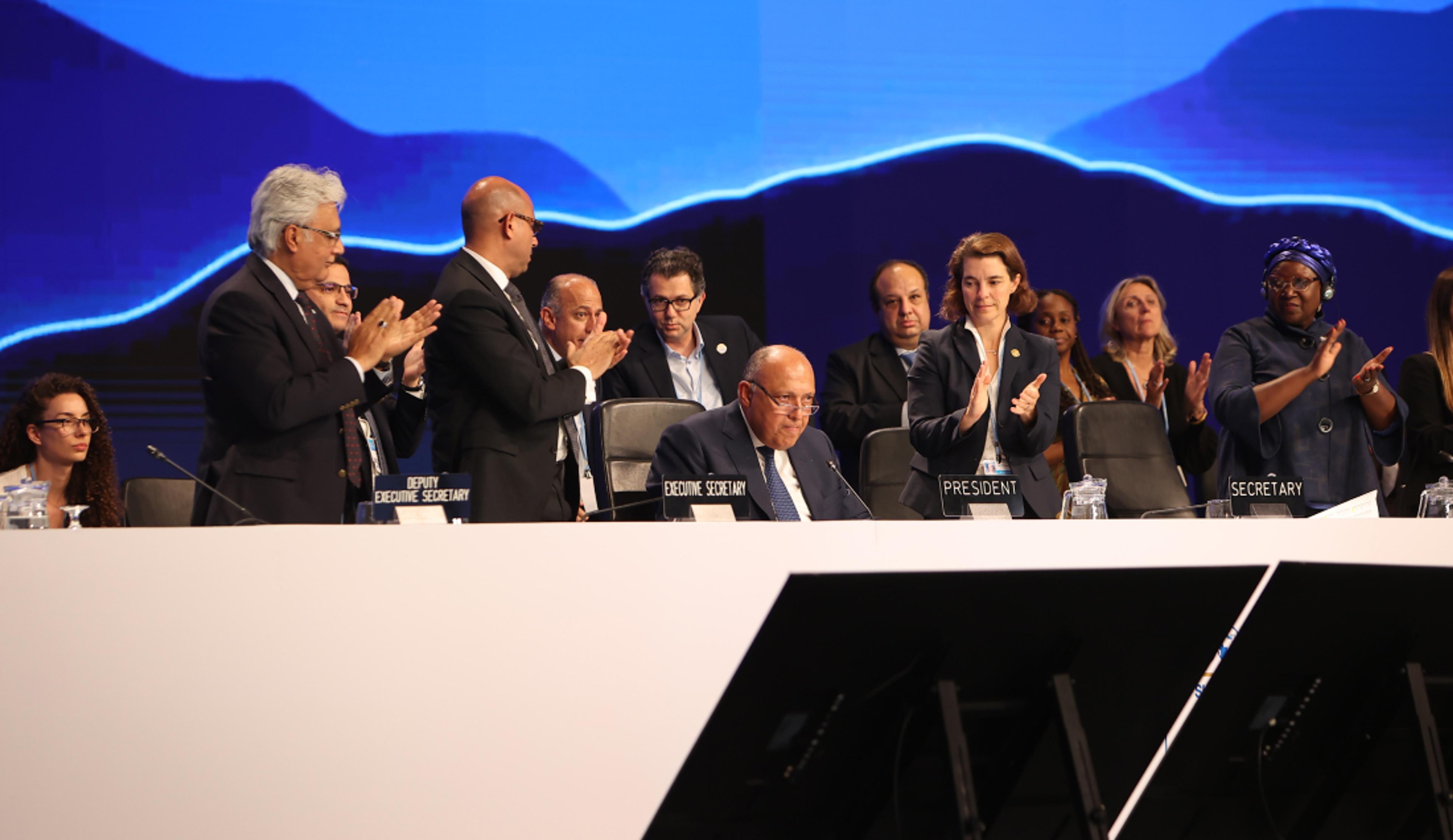COP27 ended on Sunday morning, with over thirty hours of extra time. After more than two weeks of negotiations, the event ended with the adoption of a multitude of texts, including an agreement on the creation of a new “loss and damage” fund intended to respond to the damage caused by climate change in vulnerable countries.

Before the start of COP27, we listed four themes we would be tracking:
- How countries intent to use international carbon markets
- The future of forest protection
- The end of the Clean Development Mechanism
- Infrastructure, capacity building and further clarity on timelines
This blog provides an overview of what we learned on each of those themes:
1. How do different countries intend to leverage international carbon markets?
One of the main things we noticed from attending COP 27 in-person is the different speed at which the two mechanisms under the Article 6 of the Paris Agreement are progressing and gaining momentum.
Although some of the technical rules of Article 6.2 (which enables country-to-country trading of carbon credits) remain unresolved, we saw a number of countries rushing to sign bilateral agreements, with a clear push from buying countries such as Switzerland, Singapore, Japan and South Korea. The first ever 6.2 credits, called internationally transferred mitigation outcome (ITMO), were authorised for transfer during COP by Ghana and Switzerland, a year after the two countries signed a bilateral agreement.
On the other hand, progress under Article 6.4, the mechanism which will replace the Clean Development Mechanism (CDM), has been slower than expected with contentious issues such as how to treat removals and avoidance having been pushed to next year. This second mechanism seemed to be far down on national representatives’ priorities.
One interesting development on Article 6.4 was the renaming of what was known as “unauthorised credits” to “mitigation contributions”. These are credits which will have been verified, but for which host countries do not authorise the export, or deduction from their Nationally Determined Contribution (NDC). Mitigation contributions credits include amongst other things, result-based finance which will contribute directly to supporting a country’s NDC. The text provides a high level of flexibility, leaving it to each country to determine how to best leverage the mechanism in a way that allows them to receive result-based or other forms of finance and achieve its NDCs. We believe that this clarification may allow for greater participation from the private sector, and collaboration in supporting a country's NDCs.
2. The future of forest protection
Forest conversation was a central part of the COP27 conversations, with delegates having varying opinions about the right mechanisms to leverage. Is it sovereign carbon via redd.plus, result based finance via initiatives such as the Forest Carbon Partnership Facility (FCPF), REDD+ credits under ART TREES or REDD+ credits authorised via registries such as Verra?
Little progress was made on advancing the conversation except for the cover text of COP27 mentioning that greater funding should be put towards the protection of forests. It still remains up for debate whether REDD+ does and doesn’t fall definitionally under Article 6 as there is still work being carried out on the inclusion of avoidance. Another avenue was explored by the Coalition for Rainforest Nations who tried but failed to include language around the fact that REDD results assessed and verified under Article 5.2 (article focusing on forest protection) may be submitted under Article 6.2.
Two other initiatives and partnerships were launched during COP 27. First, the Forests and Climate Leaders Partnerships to scale up action to halt and reverse forest loss and land degradation by 2030 and second, the Brazil, DRC, Indonesia partnership to form the “OPEC” of rainforests.
In the near future, forest protection seems to remain decentralised with multiple approaches coexisting, making it difficult for companies looking to buy carbon credits to navigate this space.
3. The end of the Clean Development Mechanism
Progress on the future of the Clean Development Mechanism (CDM) and its projects and credits was achieved during COP 27. The Supervisory Board of Article 6.4 was tasked with developing a template for transition requests by no later than June 2023. Project developers will have until the end of 2023 to apply and the crediting period will start on the 1st of January 2021.
It remains unclear which project types and methodologies will be allowed to transition into the 6.4 mechanism. Given that we will have to wait until COP 28 for the guidelines on methodologies to be approved, CDM credits will transition into the 6.4 mechanism before the 2023 deadline, on an ad-hoc basis. This poses an important reputational risk to the whole mechanism if what are perceived to be low-quality credits are allowed for transfer, highlighting the important role that the Supervisory Board plays.
4. Infrastructure, capacity building and further clarity on timelines
Technical progress on both mechanisms was achieved but progress will be slow. The feeling on the ground is that it will take until 2025 to see Article 6.4 credits being issued.
The rules and methodologies of Article 6.4 will take time but in the meantime, national governments should proactively work on how they can leverage these mechanisms to achieve and even exceed their NDCs. Related to this, we saw many initiatives focused on capacity building being launched, including the “Article 6 Online Capacity Building” by the UN Climate Change and UNDP and the Japanese “Paris Agreement Article 6 Implementation Partnership”.
5. What does this mean for businesses?
An internationally regulated market under Article 6.4 will take time. In the meantime, the private sector can leverage the voluntary carbon market, supporting projects that are reducing, avoiding and removing emissions today. Whatever the voluntary carbon market looks like in a couple of years, the investments made today in accelerating net zero will not be wasted.